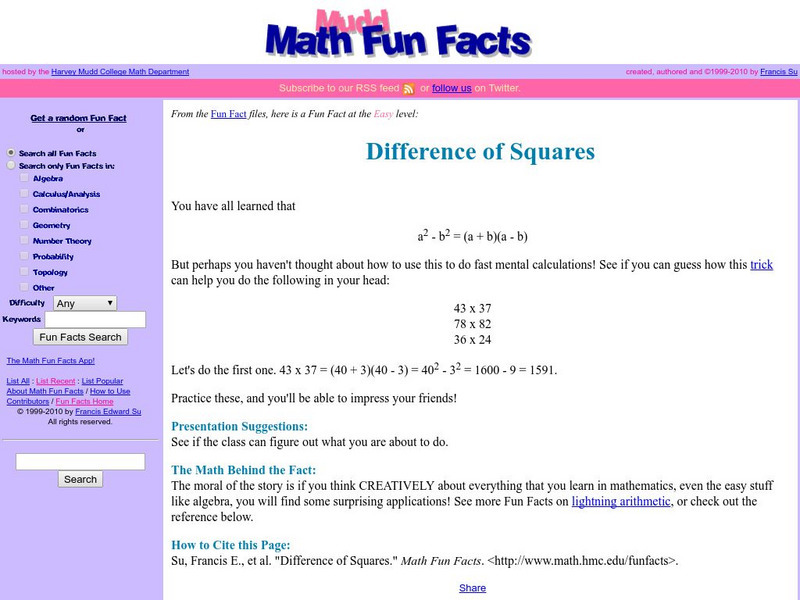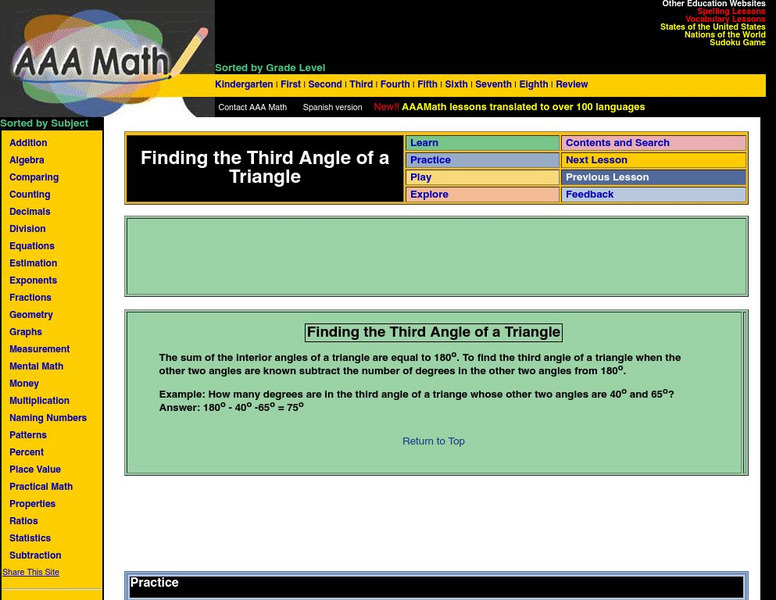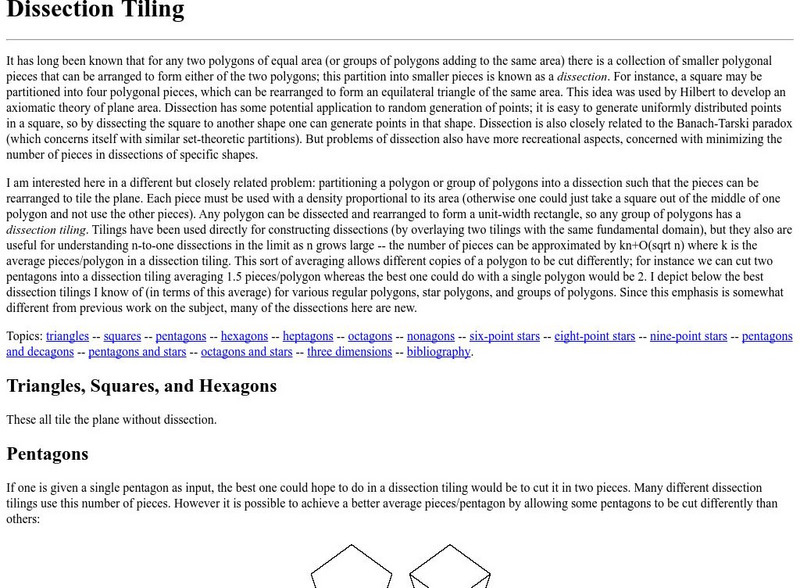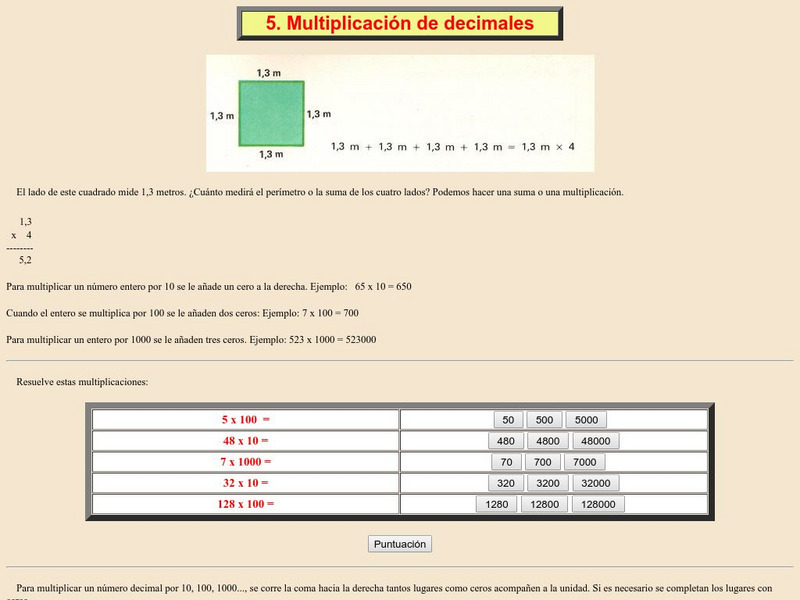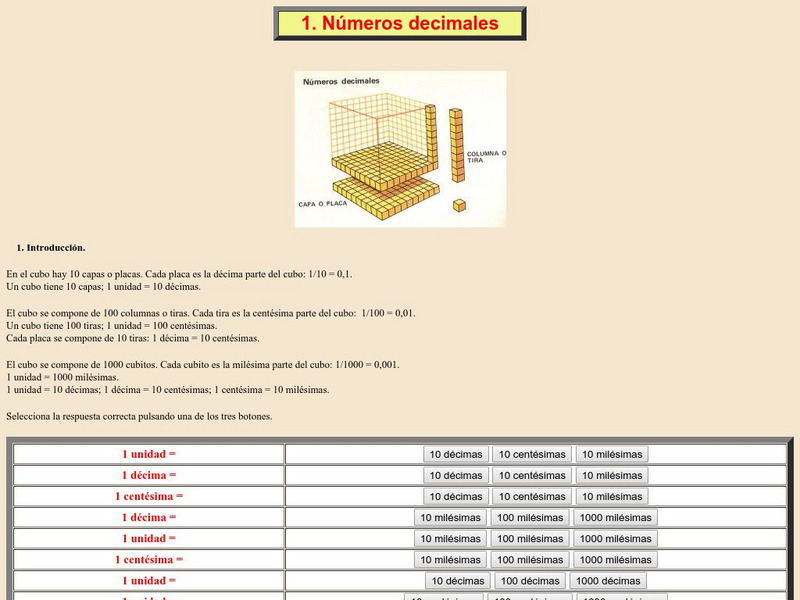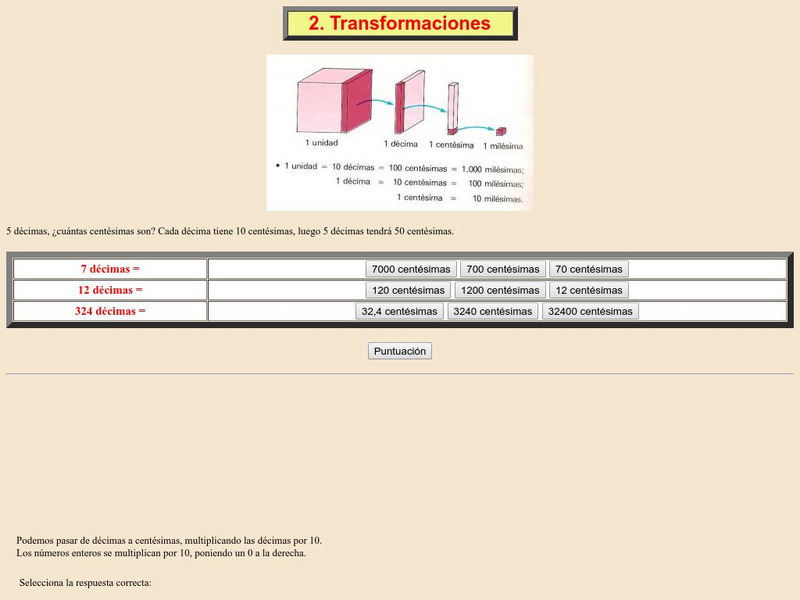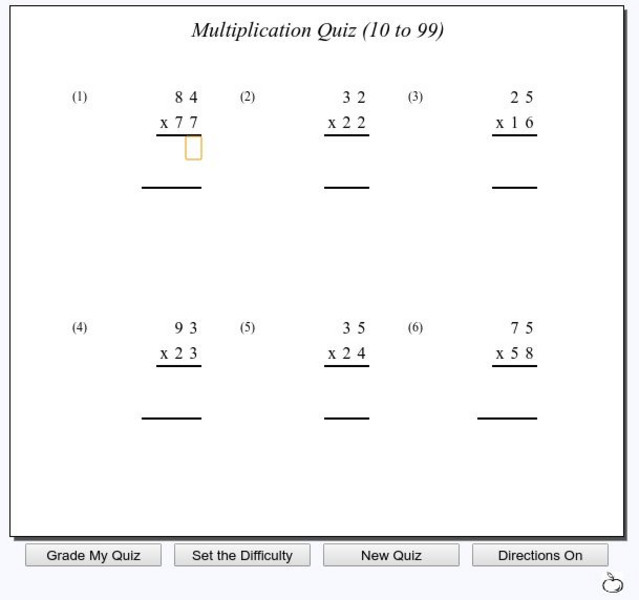Shodor Education Foundation
Shodor Interactivate: Modular Arithmetic
Introduces students to modular (clock) arithmetic and its uses in real world problem-solving.
Math Open Reference
Math Open Reference: Scalene Triangle
Learn about scalene triangles with this helpful reference tool. Provides a detailed definition, examples, and an interactive activity that enhances further explanation. Includes links to related topics.
Quia
Ixl Learning: Area of Trapezoids
Brush up on your math skills relating to the area of trapezoids then try some practice problems to test your understanding.
Quia
Ixl Learning: Expressions and Equations
Brush up on your math skills relating to expressions and equations then try some practice problems to test your understanding.
Quia
Ixl Learning: Area of Triangles
Brush up on your math skills relating to the area of triangles then try some practice problems to test your understanding.
Quia
Ixl Learning: Multiplying Decimals
Brush up on your math skills relating to multiplying decimals then try some practice problems to test your understanding.
PBS
Pbs Learning Media: Constructing Triangles
This interactive exercise focuses on the appearance and manipulation of triangles.
Quia
Ixl Learning: Long Multiplication
Brush up on your math skills relating to long multiplication then try some practice problems to test your understanding.
PBS
Pbs Learning Media: Math + Arts: The Absolute Value of Dance
In this lesson, students use a graph to choreograph a dance figure. Media resources and teacher materials are included.
Better Lesson
Better Lesson: Finals Week Day 1
Sixth graders define rate and give examples of how they can use rates.
Better Lesson
Better Lesson: Final Assessment 6.ns.1, 6.ns.2, 6.ns.3, 6.ns.4
Students use knowledge about fractions and decimals to show what they know on their assessment.
E-learning for Kids
E Learning for Kids: Math: Igloo: Multiplication and Division
On this interactive website students practice various math skills using a real-life scenario at an igloo. Those skills include multiplying three-digit numbers by two-digit numbers and computing averages.
AAA Math
Aaa Math: Inverse Relationship: Multiplication & Division
This site explains the inverse relationship of division with multiplication. Gives problems and games to practice this skill in a fun and helpful way.
AAA Math
Aaa Math: Long Division: Dividing a 4 Digit by 2 Digit Numbers
This site explains how to divide whole numbers, then offers problems and games to practice this skill.
Harvey Mudd College
Mudd Math Fun Facts: Difference of Squares
Using algebra, learn how to do fast math in your head!
AAA Math
Aaa Math: Finding the Third Angle of a Triangle
Finding the third angle of a triangle becomes easier by the explanation and examples presented.
University of California
Geometry Junkyard: Dissection Tiling
A great and very informative article about dissection tiling or tessellation.
Application Magazine
Aplicaciones: Resta De Decimales
Take this self-assessment of subtraction of decimals and find out how well you do. Final score will be given at the end of each section.
Application Magazine
Aplicaciones: Multiplicacion De Decimales
This is a self-assessment test about multiplying decimals. Final score will be given at the end of each session.
Application Magazine
Aplicaciones: Numeros Decimales
Test your knowledge of decimal numbers. Final score will be given in each section.
Application Magazine
Aplicaciones: Transformaciones
Find out how well you know the decimal system. Final score will be given in each section.
Project Britain
Primary Homework Help: Iq Problems 6
The assessment reviews addition, subtraction, multiplication, and division. Students answer 10 review problems and then check their answers by clicking a button.
Fun Brain
Fun Brain: Guess the Number
Students enter the numbers on the rocks in the correct order to solve the arithmetic problem. Solutions are provided for incorrect answers.
Mr. Martini's Classroom
Mr. Martini's Classroom: Long Multiplication Quiz
Students are challenged to multiply two, three, and four-digit numbers using the standard multiplication algorithm. They can set the number of digits in the multipliers, choose to have their quiz graded, or select new problems.






